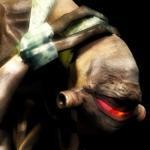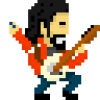Leaderboard
Popular Content
Showing content with the highest reputation on 06/11/2016 in all areas
-

Super Audio Cart: The definitive chiptune instrument, available now from ISW & OCR!
TheChargingRhino and 2 others reacted to Jorito for a topic
I'm also on the fence, but I'll probably bite the bullet as soon as I am in need of retro/chipsounds again. Oh, on vi-control I read somebody suggested recording MSX soundchips (in stead of Atari). If you guys are interested in that, hit me up. I've got 2 MSX computers (MSX2 and turbo R) and nearly all sound chips available for it. I think the Konami SCC chip would be an interesting and unique addition (and an insta-buy for me).3 points -
Happy to announce just a handful of features to be included in the upcoming FREE update to Super Audio Cart, slated to arrive before the end of the month! Remember, this isn't the entire list, so if this gets you hype... well, you're in for a treat. 1. New sound sources from the VRC6 and ultra-rare VRC7 Japan-only expansion chips for the NES/Famicom. VRC6 adds more pulse widths and saw waveforms, while VRC7 includes a palette of FM (!!!) sounds. 2. The ability to use generated ADSR envelopes as modulation sources. Imagine ADSR modulating FX, for example. 3. Filter ADSR and pitch ADSR, plus depths, as new destinations in the mod matrix. 4. 100 new snapshots.3 points
-

*NO* Super Castlevania 4 'Damned from the Outset'
Eino Keskitalo and one other reacted to Gario for a topic
Oh boy, I remember this track from the album review I did months ago. Seeing that you disagree'd with my evaluation the first time, I'll elaborate for you what I meant with my commentary. Since this is the same track as before, my vote will likely remain the same, but it's not fair to leave it at that without explaining why. On the first portion, I legitimately missed the source, and I apologize for it. 0:00 - 0:11 indeed does play the source at double time, but it does so without the clusters that define the chords. Sounds like you're setting up for a punk-style rendition of this source, which would've been pretty neat. You repeat the same thing from before in the guitar with the clarinet over it, but it's not the chord progression you're repeating, but rather a solo line of music - the chord progression was the clusters that you left out earlier, That's fine, but the clarinet does not line up with the guitar at all (opening with the intervals octave-tritone-m9th / M6th / octave-m3rd-tritone... etc.). There's little context that could make these series of intervals musically work due to the large amount of leaping involved, outside of a non-tonal piece, and even then the music would need to be developed specifically for these intervals to make sense. If you want to combine the source like this, you need to make them musically work, as they simply don't make musical sense, as they are. Moving forward, I recognize the guitar arps, and the clarinet is an obvious reference to the source. The bass completely messes up the whole sense of what's happening in the source, though - the solid bass was designed to act as a grounding reference that the other instruments were playing against, so it makes sense. You forego it in this arrangement, which makes the arpeggio and theme sound like a clashing mess of sound. The clarinet is also mixed way below the guitar, so it becomes difficult to hear. I'd argue that the clarinet at 0:51 - 1:03 actually has enough reference to the source to be considered source, still - oddly enough I don't agree that it's original writing. The strings at 1:10 really sound quiet, and while they carry the theme they're really lost behind the other instruments. Those strings could also use some humanization, as well, as they sound pretty mechanical. There's no vibrato, the attack swells for every attack (which they do in the SNES source, as well, but that's because of limited resources), and there's no volume variation that phrases the lines well. The strings could really use some humanization. I actually like the groove in this part, but the mix doesn't seem to be very well balanced - the arpeggios and strums dominate, and the theme carrying instruments seem mixed in the background. It gets more interesting as more instruments come in, but the mixing really isn't focused on the important elements, so it loses the listeners. The clarinet part works pretty well at 2:48 - the balance is nice, and the connection to the source is clean and easy to recognize. It's why the other judges like that part - it's clean and balanced. It gets pretty chaotic as everything else comes in, but if the rest of the track was well focused and balanced I could see that working as a sort of everything-comes-in-and-wrecks-your-face part. Slayer loved to do that. The biggest issue that this has, as I mentioned before, is the mixing and balance of the piece. The arpeggios and rhythm guitars should not be mixed to the front in lieu of the theme-carrying instruments. Most of this could still work with the proper mixing balance, but the beginning portion (0:22-1:10) loses what made it work in the source by having a moving bass. That static bass was absolutely critical in the source for making it work musically - without it, it makes no harmonic or melodic sense. The portion before that (0:11-0:22) would need to be rewritten in a way that utilized better line writing and/or follows more sensible harmonies, as that part simply doesn't work, as it's written. The playing wasn't bad, though, and there are certainly a lot of interesting things that are happening in this track (2:48 - end is pretty sweet, for example). Upon a second listen, I still say that this one doesn't pass, but in understanding it better I can tell you more specifically what might help make your vision make more sense for the audience. Hopefully some of my specifics on why many parts don't work musically helps you refine this in a way that works for everyone. NO2 points -

Battletoads - Behind the Music
TEAM BOMB CAT reacted to nitrozsz for a topic
Battletoads (the NES version at least) was a pretty damn good looking and good sounding game for its time. Of course we have David Wise, and incredible composer in his own right, to thank for the sound. I wanted to share this because this video has David Wise talking about the process of how the Battletoads music had to be recorded, and the limitations he faced when composing music for the NES (such as how many notes David was limited to). And you also get to see him playing some Battletoads music on the piano at the end1 point -

"The Heroic Journey", a new orchestral piece by me.
timaeus222 reacted to Slimy for a topic
I don't believe you. Lack of velocity layers? You can still control note volumes in your DAW, right? What if you tried muffling the tone of your bass notes, and you mixed a few of the samples together for each note? What about the bad mixing? You can still fix that. And yes, the song does indeed have reverb. But what if you added a shorter, but less dry reverb patch to blur notes together a bit? My own copy of EWQLSO Gold wouldn't sound nearly as good if I just slapped notes into my DAW and expected it to do all the rest.1 point -
You got a nice meaty drum to start with, so that's good. The side chaining on this one is pretty brutal, though - you don't want that pulsing effect to happen on all of your instruments like that. It can create a cool effect on the bass and sometimes the pads, but on everything it's just distracting. The drum beat seems to drone throughout the song, too. You use a few fills, which help, but don't be afraid to utilize different hat patterns, or add a bit of a different flair in your snare pattern from time to time, as well. Aside from the drums, most of your instruments sound too quiet. There's little bass, and the pads don't fill the sound space very well, even despite the heavy side chaining. Your melody carrying instruments seem to be mixed very far behind your drums and other instruments. The arrangement is pretty straight forward. I find it a shame personally that you really only use one part of the source - there's about a minute of really awesome stuff that's happening in it, and you stick with about ten seconds of it throughout. That's up to you whether or not you use all of the source, but man I do miss all of the tasty chords and themes that the source uses in your arrangement. I hope some of this helps!1 point
-

Final Fantasy VIII: Collision Course - History
Brandon Strader reacted to Sagnewshreds for a topic
Hey everyone! @Brandon Strader is off the forums for 2 weeks and told me to throw an update your way. Both the FF3 and FF8 albums are still going strong, and everyone should still be working on those remixes If you need to get ahold of him and don't have any other way to contact him outside of the OCR forums, just shoot me a message and I'll see what I can do. This album is going to be amazing.1 point -

Final Fantasy III: Resurrection - Wrapping Up (Sign Consent Form!)
Tuberz McGee reacted to Sagnewshreds for a topic
Hey everyone! @Brandon Strader is off the forums for 2 weeks and told me to throw an update your way. Both the FF3 and FF8 albums are still going strong, and everyone should still be working on those remixes If you need to get ahold of him and don't have any other way to contact him outside of the OCR forums, just shoot me a message and I'll see what I can do. This album is going to be amazing. In the meantime I plan on finishing my Battle theme remix in the next week so there's that.1 point -
Great to see some Snatcher music here, Snatcher, SD-Snatcher and Solid Snake OSTs were a great influence on me! As for the track itself, it's pretty close to the original but I like the jazzy jam feel with the guitars. It's less dark than the original MSX version I know so well but I guess that version was also more or less dictated by its SCC soundchip.1 point
-
*NO* Super Castlevania 4 'Damned from the Outset'
Eino Keskitalo reacted to Sir_NutS for a topic
Kris and I sorta co-reviewed this, so her vote falls pretty much in line with my opinions on this track. I'll add a couple more comments, I think my issues with this remix stem mostly from the way its delivered, it has sort of a hard/classic rock approach but the delivery of the riffs feels lazy and there are some ugly harmonies that work in the context of the original but really don't work in this adaptation. Kris already mentioned some key points, but I'll also add that the clarinet performance at the start sticks out as something that doesn't quite belong there, and the performance couldn't be more flat. The solo clarinet section, as sparse as it was, was the one I enjoyed the most as it felt coherent. That is, until the guitar hits again at 03:20 and the clashing harmonies come back with a vengeance. 04:10 and on the entire mix starts to fall apart, I know you're trying to convey a feeling of disarray or desperation but it ends up feeling very messy, it needed more of an organized disorder approach, imo. Regarding the source usage, as Kris pointed out it seems fairly liberal, even with the references you offer there are some sections that are hard to justify what they are supposed to represent such as the section with the sirens. I would love to hear other Js opinions on this one as this track kind of puzzles me because the delivery doesn't seem to be working at all for me. NO1 point -

*NO* Super Castlevania 4 'Damned from the Outset'
Eino Keskitalo reacted to Chimpazilla for a topic
The source tune is nebulous and has ugly harmonies, but it works in context of a spooky track in a Castlevania game. The remix also is nebulous and has ugly harmonies, but it works a lot less well with this instrumentation. Whoa, at 0:11 I'm already pretty turned off. I think I hear enough source in there, but honestly I'm not sure it even matters. This remix does not channel the source at all imo. At 2:09 there's a particularly bad harmony happening. The guitar solo is good though. The clarinet solo is also good, but wow is that section sparse. At 3:54, it just sounds like a sonic and harmonic mess. I think I get the point you're trying to make with this track, and it's possible I am being less objective than I should be on the track, but I just honestly am not feeling this one at all. NO1 point -
I am going to join the army of the Youtube comments in that the source track has been remixed so many times, yet this take on it still offers a very fresh take on it! The guitar work and the soundscape are phenomenal, no question! An instant favorite for me!1 point
-
Here's a little bit about how this instrument came to be. Way back in ~2007-2008, Dave had the idea to do a sample library based on arcade sounds. "Samplecade" was the original title. I expressed some interest in helping, since at the time I had just worked on my first sample library project w/ Impact Soundworks. He recorded some source material but we didn't get much further at that point. We talked about it from time to time. A few years ago, after spending some time composing for a game that called for an SNES-style score, I had the idea of creating some ORIGINAL sounds and then making these into a virtual instrument for ISW. We started doing some early tests in 2014. Dave & I began talking again and he shared with me his grander vision; what this instrument COULD be... a definitive collection of not just SNES sounds, but other essential 8 & 16-bit systems as well. I thought it was a great idea and set to work slowly but surely assembling elements of the library. PROTODOME recorded the C64, NES & Gameboy sounds and designed some early artwork. Seeing some gaps, Shaggy (theshaggygreak) contributed more C64 material. Neblix has been the lead engineer on the project doing a monumental amount of engine programming. By my count that is 10 people from this community that have contributed to Super Audio Cart in some form... Not counting people who have, and will, write demo songs too. Of course, the entire community of OCR did not contribute - but we don't have hundreds of ReMixers on any ONE album project either. They're still OCR albums, made by the community. And it really bears repeating that, as djp said, a portion of the sales will be going directly to support OCR. Just like the proceeds from Patreon, site funds support things like printing physical copies of albums, putting on awesome panels at conventions, hosting/bandwidth, working with freelance developers for various projects related to the site, etc. In the literal and direct sense, the entire community benefits from this!1 point
-
Cost: Yep, as mentioned in a YouTube comment reply it's going to be in the $100-150 range. I think it's going to be a pretty fantastic value for the money purely for the MODERN sounds alone. That's the big difference between this and other retro/chiptune type plugins; this has hundreds upon hundreds of presets made by layering the systems, adding effects, modulators, envelopes, and filters. A pad made from SNES strings mixed with Genesis sweeps and NES arpeggios? Sure! The factory library features contributions from OCR's own community: bLiNd, Timaeus222, Flexstyle, Sir_NutS, and Big Giant Circles, along with myself and djpretzel to name a few! Kontakt: ... Is not the most elegantly designed plugin in the world, but that's OK because we created our own interface and engine from scratch. So you're not really using Kontakt's UI, but our own thing that just uses Kontakt as the backend. All the graphics, wallpapers, knobs and other stuff are totally original. I'll be making a multi-part tutorial series on how to use Super Audio Cart, too. Starting with the basics of navigating the factory library, then moving on to basic sound layering and mixing, envelopes/filters and portamento, arpeggiator & sequencer, FX, and the mod matrix. SNES: For the SNES, for copyright reasons we couldn't sample the actual games themselves. Instead, we created our own custom bank of 400+ sounds to the same specification used by actual SNES games, right down to the same bit rate reduction (BRR) encoding. These samples could be dropped into a ROM file and loaded on a real SNES - and in fact we did that just to make sure they sounded correct! You'll find a huge range of sounds including strings, pianos, guitars, basses, ethnic instruments, FX, ensembles, and drums, with lots of variations for each. There's also an FX module with the classic "SNESVERB" sound that you can tweak and toggle at will. MegaDrive: Another tricky one, since FM synthesis has infinite possible patch combinations. However, most of them suck! So we ripped the TFI (FM synth patch) data from actual soundtracks and, using a Model 1 Genesis and GenMDM hardware, multisampled about 120 of the best patches from my favorite games. Classic instruments from titles like Streets of Rage, Phantasy Star, Shinobi, Toejam & Earl, etc. Oh yeah, and several hundred FX taken from sound tests too (non-PCM fx, so again, no copyright issue!) On the PCM end, we did use the Genesis' lo-fi DAC to record some custom drums + percussion for lovely Genesis-style 707, 808, 909, rock, metal, and hybrid kits, plus about a dozen others.1 point




